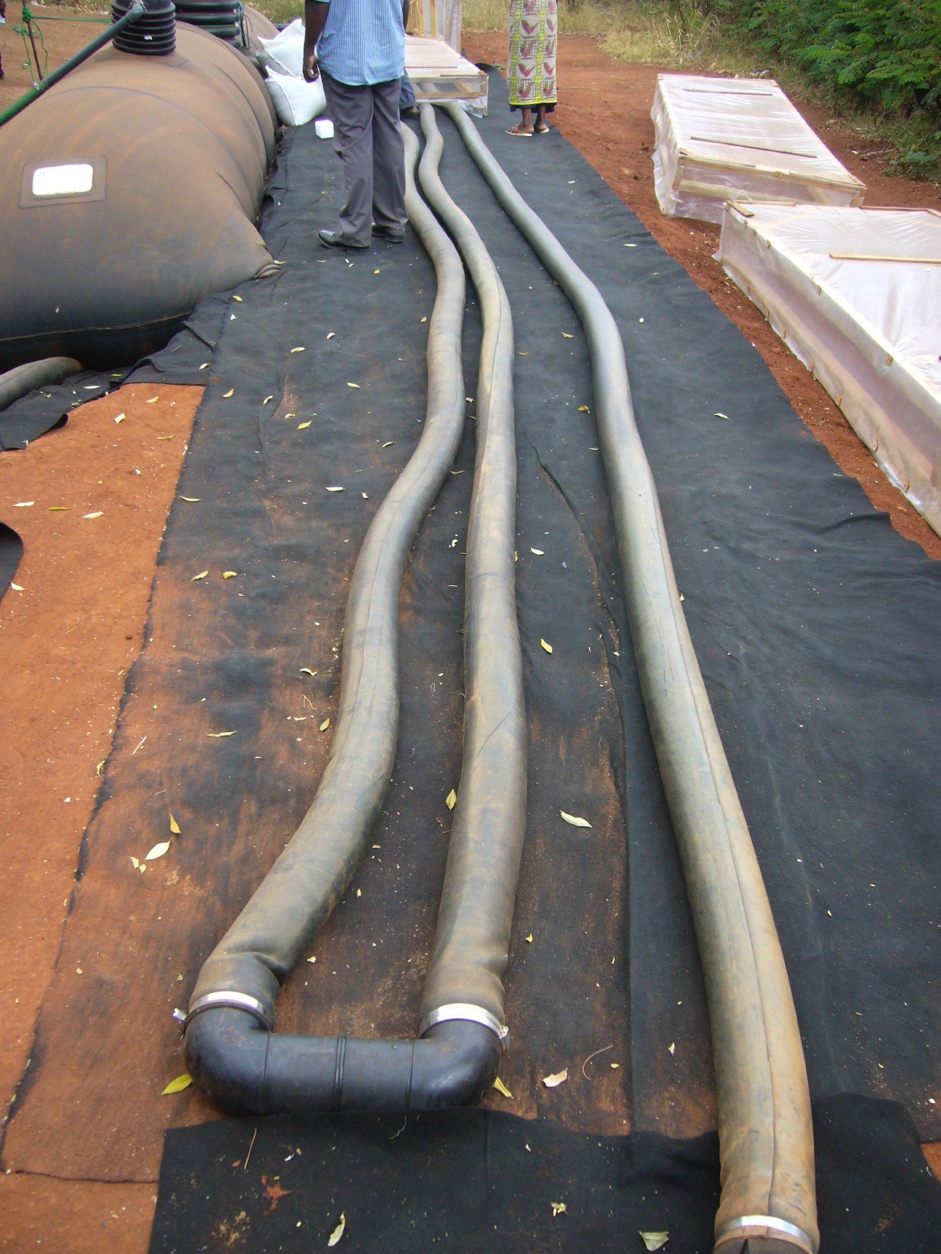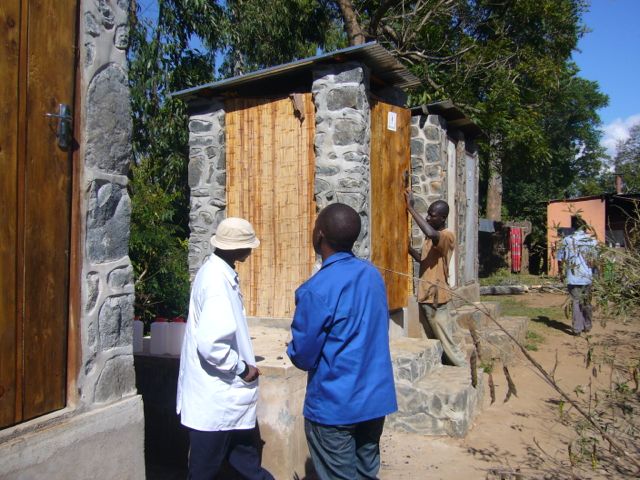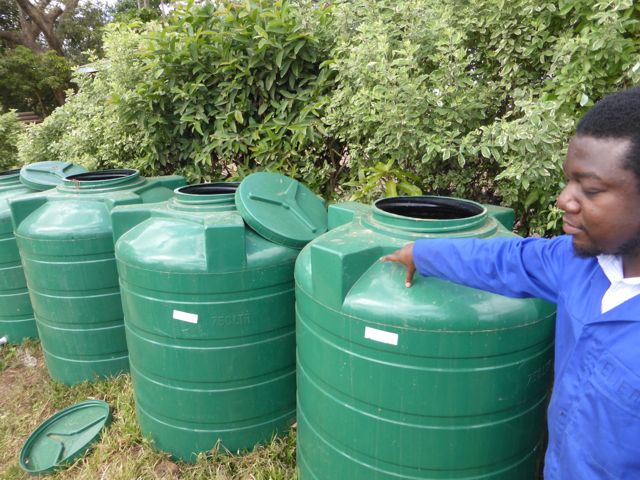New!
In 2018 a pilot of the new IFRC Aerobic Faecal Waste Treatment Unit (AFWTU) was initiated in the Bangladesh Population Movement Operation to safely treat sludge and waste water. The IFRC AFWTU is a rapidly deployable and scalable equipment package for treating human waste in natural and manmade disasters. The unit uses novel technology to deliver a tried and tested treatment process to safely treat wastewater and faecal sludge with efficient use of both energy and land and without strong odours. While the pilot is small and has experienced a number of setbacks, the unit performs beyond our expectations and delivered proof of concept. Further improvements to the system are being made and planning is underway for additional testing in contexts outside of Bangladesh.
Read the final report on the pilot here.
We have produced a set of manuals for the existing pilot and a Fact Sheet which presents the details and specifications of an upgraded unit based on the system piloted by the IFRC in Bangladesh in 2018 and 2019. The manuals are specific to the current pilot and will be revised after additional field trials.
Read the Fact Sheet here
Read the Manuals here
Report from July 2017 sludge technology workshop
Final Report – WASTE DISPOSAL IN EMERGENCIES WORKSHOP
Results from the research on Vermicomposting
Sourcing of Worms for Large Scale Vermicomposting
Vermicomposting for Sludge Treatment
Development of sludge treatment and disposal facilities for emergency response
Technical Design Criteria
Definition:
When standard pit latrines are not feasible in emergency response due to ground conditions, preference or land dispute, sanitation becomes exponentially more complicated. Put simply, the human waste has to go somewhere. Disposing of human waste is complicated under the best of circumstances. Safe disposal in an acute emergency is currently an unexplored area of emergency equipment development.
At this stage, the IFRC is viewing the issue in terms of two contexts: mass scale and specialized. We are currently more focussed on the mass scale.
Mass Scale:
Equipment for larger populations (5-20,000 people at 2 litres per person per day, low liquid content). The equipment should be simple and inexpensive to operate and be transportable by aircraft. As this is equipment for the acute emergency phase, the effluent quality does not need to be high. Anything which reduces the harmful impact of the sludge (including odour, destruction of fish, algae blooms, outbreaks, etc), even a small amount, is welcome. Volume reduction is ideal but not a necessity. Batch or continuous flow treatment is acceptable.
Specialized:
Equipment for smaller populations in field hospitals and base camps (50-300 people at 150 litres per person per day, high liquid content). This would require higher effluent quality (should not contaminate the environment or cause outbreaks) but would not need to be drinkable . The system may need to be capable of handling high chlorine content in the wastewater if used in cholera treatment centres. The system would need to fit on a plane. Ease of use is less of a priority (requirement of technical specialists is acceptable).
The results of a Dutch government funded project and sanitation conference were compiled into requirements for equipment for both mass scale and specialized equipment. The requirements can be found here. However, many of the listed technical requirements are too specific. It is preferred that designers or suppliers interested in developing equipment in this area contact the following people directly:
Objective:
Develop and test processes and equipment for the safe disposal of faecal sludge.
Activities:
The work undertaken on developing sludge treatment processes for emergencies builds upon the progress made as part of a project funded by BUZA, the Ministry of Foreign Affairs within the Netherlands Government, which included a review of the existing options available and developed requirements for sludge treatment in emergencies for future research. Among the various known sludge treatment methods, anaerobic digestion (and the various associated methods), addition of a bioadditive to catalyze the reduction of sludge and pathogen removal, and the use of worms have shown the most promise for the humanitarian emergency context.
The ESP wanted to identify a process or system that would be simple and inexpensive to operate, rapidly operational and be transportable by cargo aircraft. As this would be a system for the acute emergency phase, the final effluent quality did need to be high. Anything which reduces the harmful impact of the sludge (including odor, destruction of aquatic life, algae blooms, disease outbreaks, etc.), even a small amount, was considered welcome. Sludge volume reduction was, obviously, desirable but not a necessity. Batch or continuous flow treatment and the use of chemical consumables were deemed acceptable. Modular designs (i.e. equipment working in parallel in order to be scalable) were prioritized.
To enable trialing and development in this work stream it was essential to organize a test location, since it is not possible to source large volumes of faecal sludge in many countries. The decision was therefore taken to set up a testing location in Blantyre, Malawi in order to take advantage of the ESP’s desludging activities and existing staffing. Nevertheless, as part of the ESP a testing laboratory needed to be further expanded and relationships with organisations which had access to fresh sludge developed. This has taken time and the dependency of this work stream on preliminary work is the main reason why this area of the ESP will need to be carried on beyond the existing funding.
Anaerobic Digestion has been explored and following numerous proposals from commercial firms. IFRC chose to trial the Flexigester from SOWTech which combines anaerobic digestion with a pasteurisation system. This system involves an innovative “Orca agitation valve”, which opens automatically causing release of gas and a flow of material in the digester agitating the material and improving the digestion efficiency. The system also involves an innovative way of killing pathogens in the effluent and a ‘donut’ to capture the nutrients from the effluent. Trials of this in Malawi are ongoing. Given the detention time required it is unlikely that anaerobic digestion will be a complete solution for large scale sludge disposal. However, it may be appropriate for smaller scale situations or constitute a piece of a larger solution.

Flexigester ‘Donut’ for effluent disposal and gasholder full of biogas, June 2014

Flexigester trials June 2014, temperature will be increased by plastic ‘greenhouses’ on top of the effluent pipes (white boxes)

Testing effectiveness worm and terra preta toilet, June 2014
Tigerworm vermicompost processing has shown promising results for single toilets. However, large scale worm treatment has not been previously explored and current estimates indicate that a human waste load of 10 people per square meter can be achieved. Large scale vermicomposting research work began in July 2014 to assess the feasibility of importing large quantities of worms (live and eggs) and to study how to maximize the efficiency of vermin-compost processing. However, it was impossible to import the worms into Malawi and the trial was relocated to India.
The results of the first phase of the worm research trial, a questionnaire sent to various worm suppliers in South Africa, indicate that the South African worm industry has the capacity to supply over 3,000 kg per month or over 36,000 kg of live worms per year. Allowing for the number of non-responses to the questionnaire it is thought that this figure could be significantly higher and potentially double these figures.
The current monthly supply of worms has the potential to process the faecal sludge from an average sized humanitarian camp (population of 11,400). Three thousand kg of worms have the ability to process the faecal waste from 15,000 people daily, around 4 tonnes per day. Through the companies’ projections it can be seen that there is the potential to increase production to over 11,000 kg of worms per month or over 132,000 kg per year. This could support processing of around 15 tonnes of faecal waste per day. Furthermore the worms processing the waste would multiply, in ideal condition their mass could double approximately every 60 days; these worms could be harvested and used in other camps. Another option would be to establish an independent worm farm for these systems. From these results it can be concluded that the South African worm industry currently has the capacity to supply worms for humanitarian settings and this capacity could be quickly increased to meet larger demands.
The second phase of the trials tested the effects of worms and vermifilters on faecal sludge. The vermifilters and sludge were housed at Rajiv Gandhi Infotech Park Sewage Treatment Plant in Hinjawadi, 20km outside the city of Pune in India. The vermifilters took approximately three days to set up and were run for a period of 52 days (7/3/15 to 27/4/15). When the 11 day feeding phase is accounted for, there were only 38 days for sludge digestion and vermicompost production. This is a relatively short period to run such an experiment as we have noted in our previous work that it takes approximately six weeks for the worms to acclimatize to a new food source 
Vermifilters in-situ
The full report of the worm trials is available at the top of this page.
Although this study was not completely definitive it has shown clearly that:
- § worms are capable of digesting faecal sludge and converting it into compost
- § cocoons can hatch into worms in the presence of faecal sludge
- § vermifilters are efficient at removing solids and also faecal pathogens
This is therefore a promising avenue for sludge treatment, which merits further examination, particularly over a longer period of time with more feed cycles. Refugee camps could be ideal locations for vermicomposting.

Testing bio-additives in Malawi
Two bio additives, which are biological catalysts for promoting sludge reduction and pathogen removal, were identified for trialing. These are Consortium Prebio Lice (Co-Lice) SM produced by Natura Viva of France and is transported in powder form, and Indian Ministry of Defence Research Laboratory (DRDO) anaerobic microbial cocktail, which is now being commercially developed and marketed by NVH Technology and is transportable as a aqueous solution.
Unfortunately, preliminary results of the Co-Lice have not shown any impact of sludge volume. Trials for the NVH cocktail began in late August 2014. Results on solids and pathogen removal were not as high as expected. It is probably that tampering with the materials during transport and customs clearance may have resulted in reduced performance. The IFRC is currently planning new trials of the NVH septic tank and ‘cocktail’ in 2015.

Field trial of heat treatment unit
The IFRC has utilized small scale water treatment units for decades. While the units are often expensive and complicated to operate, they are able to produce water of high quality and can be dispatched and set up very quickly. Package wastewater treatment plants like those used in military outposts are far less common and much higher in price and complex than considered feasible for the humanitarian context. Furthermore, it was assumed that package units would receive more research and development interest and funding from other sources and that the ESP’s resources were better spent on mass scale, simple designs. However, when a known supplier of water treatment plants approached the IFRC with a design for a package heat treatment unit for faecal sludge which was designed and priced for the humanitarian context it was hoped that it might be possible to serve both mass and specialized contexts.
The development of the Hygienizer was much slower than previously hoped. Expectations that it might be used to treat human waste in Ebola treatment centres were unmet due to severe production delays.
Preliminary testing in Norway indicated that the unit could remove pathogens from faecal sludge, thus rendering it safe for other uses. The device was finally sent to Cote d’Ivoire in 2015. Early trials using only water have indicated operational issues with the unit in field conditions. These issues are being addressed with the supplier prior to further trials with human waste.
William Carter
Senior Officer, Water, Sanitation and Emergency Health Unit (WatSan/EH)
International Federation of Red Cross and Red Crescent Societies
Chemin des Crêts, 17|1209 Petit Saconnex |Geneva|Switzerland
Tel. +41 (0)22 730 4218 | Fax +41 (0)22 733 0395| Mob. +41 (0)79 251 8002
Email william.carter@ifrc.org